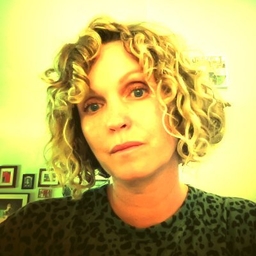
Katharine Gammon
Science, tech, environment journalist, writing for The Guardian, The Atlantic, Nautilus, and elsewhere. say hi @kategammon.bsky.social
Articles
-
1 week ago |
bbc.com | Katharine Gammon
The pandemic generation: How Covid-19 has left a long-term mark on childrenGetty ImagesThe stress and isolation of the pandemic has left social and emotional scars that are already being seen in children, but scientists also predict there could be huge economic costs due to disrupted education. For US pre-school teacher Rebekah Underwood, there is something different about the class of 2025.
-
1 week ago |
flipboard.com | Katharine Gammon
Linda McMahon says there's been 'progress' from Harvard and Columbia amid Trump's attacksIn an interview with NBC News, the education secretary said Harvard still needs to do more to combat antisemitism and vet international students. Education Secretary Linda McMahon on Friday defended President Donald Trump's attacks on elite universities like Harvard and Columbia, while saying that …
-
1 week ago |
theguardian.com | Katharine Gammon
As the pumps whir around us, Denis Bilodeau motions to the liquid in the vats below. It looks like iced tea, but in fact it’s secondary treated sewage, cleaned of any solids by the plant next door. In less than an hour, and after three steps of processing, we will be drinking it – as pure water.
-
1 month ago |
nautil.us | Katharine Gammon
Picture this: You’re sitting down, engrossed in a meal, when an unfamiliar person walks by. There’s something about them—Hair? Smile? Vibes?—that instantly draws you in and makes you want to strike up a friendship. Nautilus Members enjoy an ad-free experience. Log in or Join now . A new study suggests that it could be the scent they exude that attracts you to them.
-
1 month ago |
theguardian.com | Katharine Gammon
On the eve of the gold rush, California was teeming with grizzly bears – as many as 10,000 of them. They were so popular that the Bear Flag Republic – a short-lived attempt by a group of US settlers to break away from Mexico in 1846 – used the animals as their mascot; an image that still adorns California’s flag. But by the mid-1920s, the bears were all gone.
Try JournoFinder For Free
Search and contact over 1M+ journalist profiles, browse 100M+ articles, and unlock powerful PR tools.
Start Your 7-Day Free Trial →Coverage map
X (formerly Twitter)
- Followers
- 3K
- Tweets
- 4K
- DMs Open
- Yes